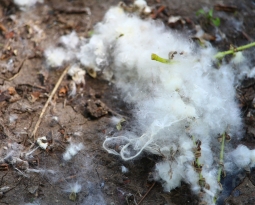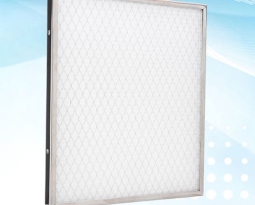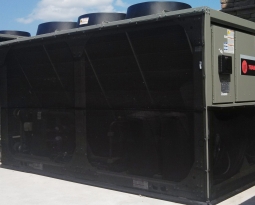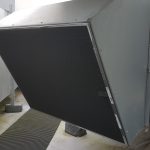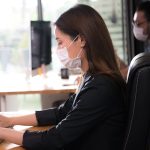 Recently we co-sponsored a special webinar, Understanding ASHRAE’s Recommendations on Filtration and Disinfection for COVID-19. The webinar was hosted by NAFA (National Air Filtration Association) and co-presented by Kathleen Owen and Mike Corbat. Kathleen is a consulting engineer for Owen Air Filtration Consulting, past Chair of SSPC 145 for gas-phase air cleaner testing, and the current Chair of ASHRAE 52.2. Mike is Vice President of Product Development at our parent company, Rensa Filtration, and past Chair of ASHRAE TC 2.4 and ASHRAE 52.2. Their webinar highlighted the role proper air filtration can play in controlling air-borne transmitted diseases like COVID-19.
Recently we co-sponsored a special webinar, Understanding ASHRAE’s Recommendations on Filtration and Disinfection for COVID-19. The webinar was hosted by NAFA (National Air Filtration Association) and co-presented by Kathleen Owen and Mike Corbat. Kathleen is a consulting engineer for Owen Air Filtration Consulting, past Chair of SSPC 145 for gas-phase air cleaner testing, and the current Chair of ASHRAE 52.2. Mike is Vice President of Product Development at our parent company, Rensa Filtration, and past Chair of ASHRAE TC 2.4 and ASHRAE 52.2. Their webinar highlighted the role proper air filtration can play in controlling air-borne transmitted diseases like COVID-19.
In 2020, to fight the spread of disease, ASHRAE formed the Epidemic Task Force (ETF). The 140+ team members of the ETF are tasked with pulling together and disseminating epidemic information quickly and widely. The webinar featured information about the ETF and their findings and recommendations regarding filters and air filtration. Here is a recap of some of the presentation’s topics:
Air Filtration Basics
When we sneeze, cough, sing or even breathe we spread germs into the air via saliva. Larger droplets fall and dry rapidly, but smaller droplets can stay airborne for hours, where they can infect others. It’s not just viruses that linger in the air, but particles such as lead, sea salt, face powder, coffee soot and a million other things. Most are harmless. But many are not.
Air filters catch many of these particles. The smaller the contaminant, however the more likely it is to get through the air filtration and spread between people. The most penetrating particle size is typically between .1 and .2μm, which can penetrate all but the most effective air filters.
MERV vs. HEPA
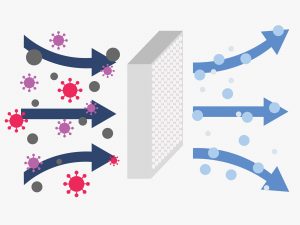 MERV, which stands for Minimum Effective Reporting Value, is an air filtration effectiveness rating derived from a test method developed by the American Society of Heating, Refrigerating and Air Conditioning Engineers (ASHRAE). The higher a filter’s MERV number, the smaller are its holes, and the smaller pathogens it will stop. A MERV 14 filter, for example, will stop most particles 0.3 microns or larger. The highest MERV rating is MERV 16. HEPA filters are not MERV rated, as they exceed the ASHRAE protocol 52.2 used in determining the MERV ratings. HEPA filters are the most effective filters, trapping particles as small as .01 microns. Since the COVID-19 virus is approximately 0.125 microns in diameter, a HEPA filter can play a significant role in halting virus transmission. Our earlier article, the Role of Air Filtration for Virus Protection goes into even more detail on the benefits of HEPA filters for containing communicable diseases.
MERV, which stands for Minimum Effective Reporting Value, is an air filtration effectiveness rating derived from a test method developed by the American Society of Heating, Refrigerating and Air Conditioning Engineers (ASHRAE). The higher a filter’s MERV number, the smaller are its holes, and the smaller pathogens it will stop. A MERV 14 filter, for example, will stop most particles 0.3 microns or larger. The highest MERV rating is MERV 16. HEPA filters are not MERV rated, as they exceed the ASHRAE protocol 52.2 used in determining the MERV ratings. HEPA filters are the most effective filters, trapping particles as small as .01 microns. Since the COVID-19 virus is approximately 0.125 microns in diameter, a HEPA filter can play a significant role in halting virus transmission. Our earlier article, the Role of Air Filtration for Virus Protection goes into even more detail on the benefits of HEPA filters for containing communicable diseases.
A higher filter rating, however, is not the best option for every space. As more air is filtered, more air is blocked. This can lead to an increased drop in air pressure and reduced airflow. By reducing airflow, contaminants might actually end up lingering longer in a space. Another drawback: HEPA filters require more frequent cleaning or replacement.
(At Permatron, we offer air intake screens that extend the life of HEPA filters along with a wide range of other filter options.)
During the webinar the following topics were also discussed:
Removal vs. Dilution
Removal of particles is a critical element in virus control, but it’s not the only way your HVAC system helps minimize the spread of disease. HVAC air brings in outside air while also returning clean, filtered air back into a space. These actions dilute any remaining infectious particles. For this reason, keeping the HVAC recirculating fan on at all times is recommended.
Filter Replacement
Since filters trap COVID-19 particles, HVAC maintenance and filter replacement or cleaning should be performed regularly but cautiously, such as by wearing PPE (gloves, face shield etc.). When maintenance work is completed, personnel should immediately wash their hands with soap and water, or an alcohol-based sanitizer.
Electronic Air Filters
These filters remove particles from the airstream by electrically charging them using corona wires or generating ions. Silicone buildup on these electrostatic precipitators reduces their effectiveness, so they should be wiped down regularly. The effectiveness of electronic air filters depends on a number of factors including their location, airflow and more.
UV-C In-Duct Air Disinfection
Ultraviolet energy has been shown to inactivate viral, bacterial and fungal organisms, and banks of UV lamps can be installed inside HVAC systems or ductwork. The high UV doses inactivate the microorganisms as they pass through, and have been shown to be effective in COVID-19 elimination. Special PPE should be worn when working with ultraviolet energy to prevent damage to skin and eyes.
In-Room Portable Air Cleaners
When building-wide air filtration doesn’t make sense, you can get in-room, portable air cleaners. These units pull air into the device and then return cleaner, filtered air back out. In many cases, flexible ductwork can be attached to allow for air discharge outside the room. Typically, these units are rated by the Association of Home Appliance Manufacturers for their effectiveness. You can learn more about them here.
Watch the Entire Webinar
Understanding ASHRAE’s Recommendations on Filtration and Disinfection for COVID-19 covers many additional facts and provides great air filtration advice. To watch the entire webinar, go here and start making smart, informed filtration decisions to improve the interior air quality of your spaces, and the health of their occupants.
At Permatron we provide guidance and support along with a wide range of filter and filter screen options that can match your protection needs and your budget. Contact us to get started with your own safe, effective and cost-effective air filtration products.
